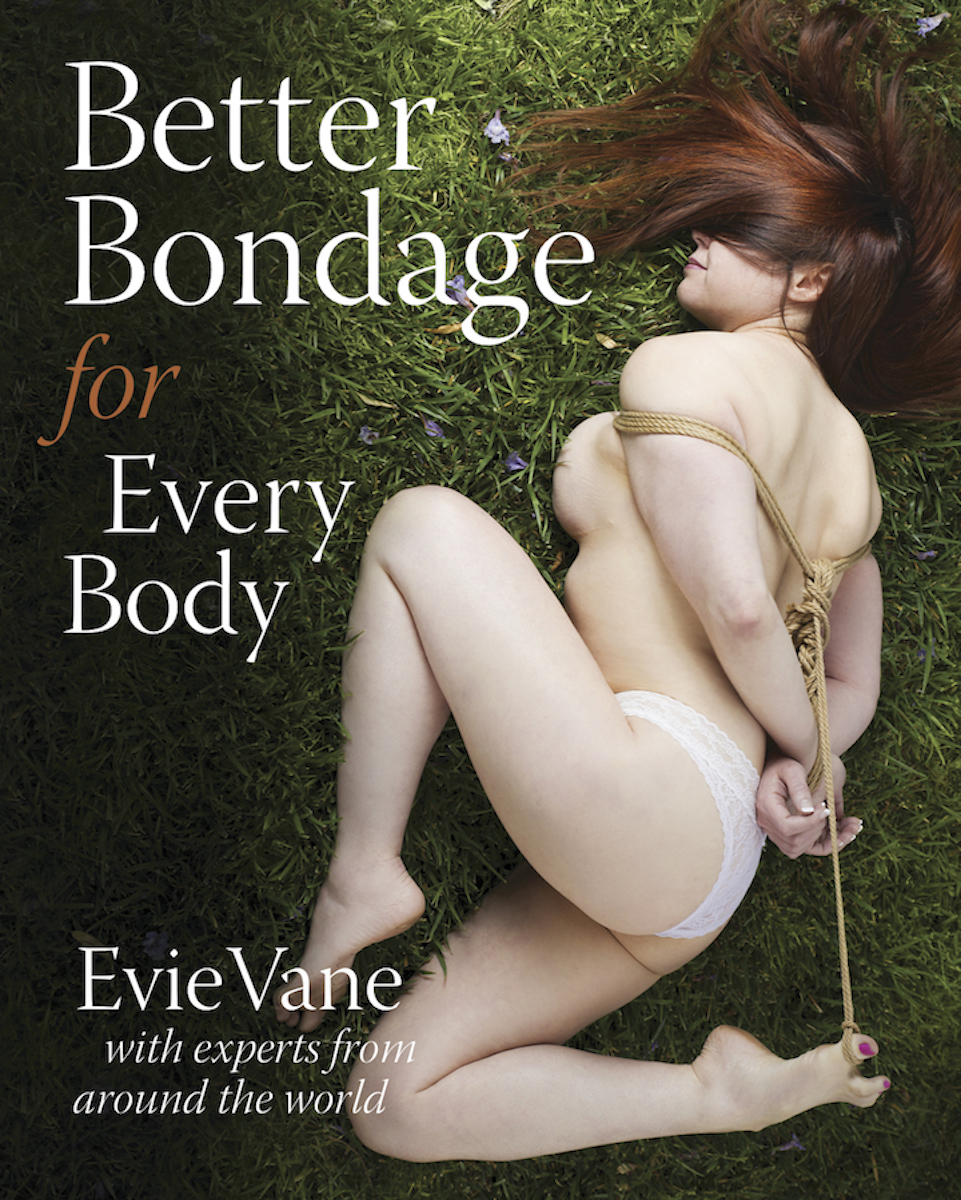 This week I’m reviewing Evie Vane’s second book, Better Bondage For Everybody. This one has some very unexpected gems which I haven’t found anywhere else – and I’m going to be re-reading it. Often.
This week I’m reviewing Evie Vane’s second book, Better Bondage For Everybody. This one has some very unexpected gems which I haven’t found anywhere else – and I’m going to be re-reading it. Often.After reading Evie’s first book, The Little Guide To Being Tied Up, I was very charitably disposed towards her. She’d done a very good thing, after all; she’d provided rope bottoms with their very own book resource, which in my oh so humble opinion, has been a big missing piece for a long time.
So when I opened the second book, and began leafing through it, I was already optimistic.
But then she surprised me.
This book wasn’t anything like her first one. Not at all.
In fact, you couldn’t really compare the two, because they were so different. In The Little Guide To Getting Tied Up, Evie went deep into the subject of rope bottoming, to maximize the value she was giving to other rope bottoms.
But in Better Bondage For Every Body, Evie went broad. She found a lot of areas of bondage information that are barely touched on, and instead of just writing on them all herself, she brought in people she felt could write deeply on these subjects with a high degree of expertise.
To be clear, this is not a “how to do ties” book. There is a section on ties for limited mobility, but that’s really more in keeping with the greater theme; presenting different perspectives and less mainstream rope and bondage information to enhance everyone’s experience with rope bondage.
And damn, did I ever geek out as I read this. For a rope bondage nerd, this book is freaking paradise!
 One of the first, most immediate facets that stood out to me with this book were the pictures. It’s pretty common to find pictures of young, slender hot women in bondage, demonstrating their youth and flexibility.
One of the first, most immediate facets that stood out to me with this book were the pictures. It’s pretty common to find pictures of young, slender hot women in bondage, demonstrating their youth and flexibility.
However, the pictures in this book are considerably more varied that that; men, women, older, younger, of different body shape and proportion. This has the effect of making rope bondage feel more approachable, and conveys a sense of rope really being for everybody, as opposed to simply the aforementioned young, slender, and flexible people.
So that was nice, I quite enjoyed that. It makes the whole subject feel more relaxed and enjoyable.
And then I got to the subject matter.
And then I geeked out really hard and started taking notes. Because I’m a nerd like that.
Here I found a really detailed, clearly illustrated chapter on anatomy for rope bondage, including detailed illustrations of nerve pathways. Far more detail than I’ve seen written elsewhere; and it was written by a doctor! I made an immediate note to come back to this often.
Here I found three blog posts discussing the most common fears of people wanting to be tied up; age, lack of flexibility, the concern that no one will tie them; and offering gentle, helpful empathy and excellent advice for those people.
Neuroscience meets rope was unexpectedly interesting – mixing the psychology around touch with hands and speculation with regards to how particular areas being bound in rope affects the nervous system makes for fascinating reading – if you’re a bondage geek, anyway.
The information on the effects of different stages of a tie is very good for calculating psychological impact and where your bottom is in a scene – love me some good top information.
I found some of the best tips I’ve ever seen on pain processing; as someone who goes up in rope myself, I found this very relevant to my own rope enjoyment, and as a top, I really appreciated learning those tips and tricks – knowing how people process discomfort and pain informs my own planning when it comes to crafting a hot BDSM scene.
Other examples include:
- discussions on bondage for people who are maturing in years
- ties for people with limited range of motion
- the gender non-conforming
- male rope bottoms and getting tied up
- self tying (very interesting perspectives here)
The list goes on, and each section is filled with illuminating insights and a helpful perspective. It’s clear that Evie put a lot of thought into selecting the experts who have contributed; and they’ve definitely delivered the goods.
I’ve found information and perspectives here that I haven’t found anywhere else – and I consider myself to have benefited immensely from the read.
Basically, Better Bondage For Every Body goes into the fringe areas of rope bondage, the less mainstream, and the areas where one is more likely to find challenges, with an air of gentle curiosity and a quiet confidence that there are solutions and resources available for all who want to engage in rope bondage – and she points a lot of these out.
Evie encourages people to be flexible not only in the chapter on stretching, but also in their attitudes towards rope and their own journeys with rope, with the aim of greater pleasure and enjoyment.
As a rope top, this was perhaps one of the most enjoyable books on bondage I’ve ever read; partly because of all the rare, detailed practical information to be found but also because this is a book that just makes you feel really comfortable with having an individual journey with rope bondage, taking your time, and doing what works for you.
It’s a book that leaves you feeling good about yourself and what you’re doing, and it’s for everybody; rope tops and bottoms alike.

